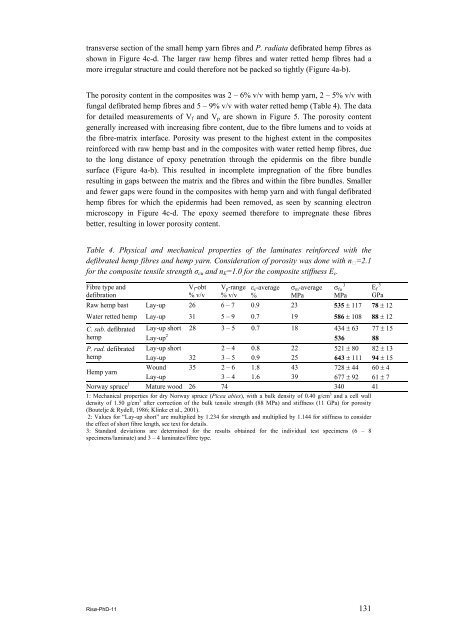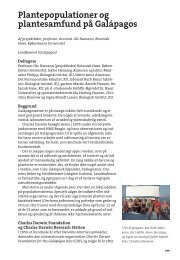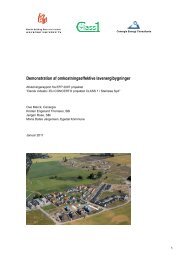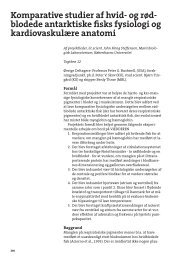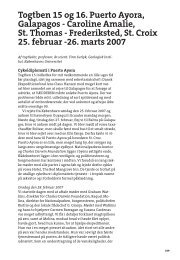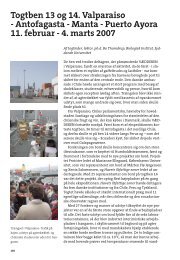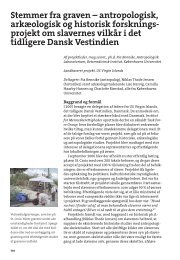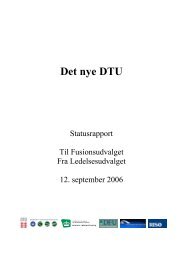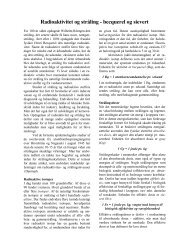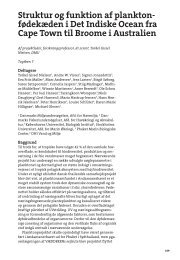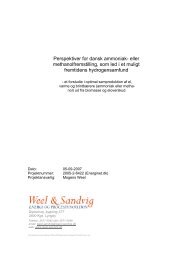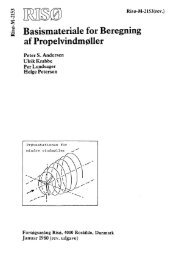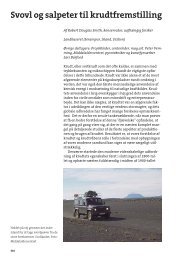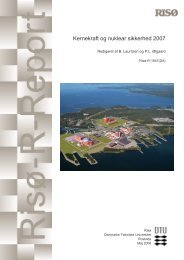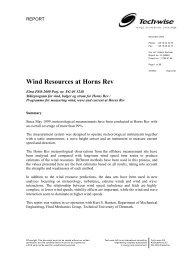Properties of hemp fibre polymer composites -An optimisation of ...
Properties of hemp fibre polymer composites -An optimisation of ...
Properties of hemp fibre polymer composites -An optimisation of ...
Create successful ePaper yourself
Turn your PDF publications into a flip-book with our unique Google optimized e-Paper software.
transverse section <strong>of</strong> the small <strong>hemp</strong> yarn <strong>fibre</strong>s and P. radiata defibrated <strong>hemp</strong> <strong>fibre</strong>s as<br />
shown in Figure 4c-d. The larger raw <strong>hemp</strong> <strong>fibre</strong>s and water retted <strong>hemp</strong> <strong>fibre</strong>s had a<br />
more irregular structure and could therefore not be packed so tightly (Figure 4a-b).<br />
The porosity content in the <strong>composites</strong> was 2 – 6% v/v with <strong>hemp</strong> yarn, 2 – 5% v/v with<br />
fungal defibrated <strong>hemp</strong> <strong>fibre</strong>s and 5 – 9% v/v with water retted <strong>hemp</strong> (Table 4). The data<br />
for detailed measurements <strong>of</strong> Vf and Vp are shown in Figure 5. The porosity content<br />
generally increased with increasing <strong>fibre</strong> content, due to the <strong>fibre</strong> lumens and to voids at<br />
the <strong>fibre</strong>-matrix interface. Porosity was present to the highest extent in the <strong>composites</strong><br />
reinforced with raw <strong>hemp</strong> bast and in the <strong>composites</strong> with water retted <strong>hemp</strong> <strong>fibre</strong>s, due<br />
to the long distance <strong>of</strong> epoxy penetration through the epidermis on the <strong>fibre</strong> bundle<br />
surface (Figure 4a-b). This resulted in incomplete impregnation <strong>of</strong> the <strong>fibre</strong> bundles<br />
resulting in gaps between the matrix and the <strong>fibre</strong>s and within the <strong>fibre</strong> bundles. Smaller<br />
and fewer gaps were found in the <strong>composites</strong> with <strong>hemp</strong> yarn and with fungal defibrated<br />
<strong>hemp</strong> <strong>fibre</strong>s for which the epidermis had been removed, as seen by scanning electron<br />
microscopy in Figure 4c-d. The epoxy seemed therefore to impregnate these <strong>fibre</strong>s<br />
better, resulting in lower porosity content.<br />
Table 4. Physical and mechanical properties <strong>of</strong> the laminates reinforced with the<br />
defibrated <strong>hemp</strong> <strong>fibre</strong>s and <strong>hemp</strong> yarn. Consideration <strong>of</strong> porosity was done with n =2.1<br />
for the composite tensile strength σcu and nE=1.0 for the composite stiffness Ec.<br />
Fibre type and<br />
defibration<br />
V f-obt<br />
% v/v<br />
V p-range<br />
% v/v<br />
ε c-average<br />
%<br />
σ m-average<br />
MPa<br />
σ fu 3<br />
MPa<br />
Raw <strong>hemp</strong> bast Lay-up 26 6 – 7 0.9 23 535 ± 117 78 ± 12<br />
Water retted <strong>hemp</strong> Lay-up 31 5 – 9 0.7 19 586 ± 108 88 ± 12<br />
C. sub. defibrated Lay-up short 28 3 – 5 0.7 18 434 ± 63 77 ± 15<br />
<strong>hemp</strong> Lay-up 2<br />
536 88<br />
P. rad. defibrated Lay-up short 2 – 4 0.8 22 521 ± 80 82 ± 13<br />
<strong>hemp</strong> Lay-up 32 3 – 5 0.9 25 643 ± 111 94 ± 15<br />
Hemp yarn<br />
Wound<br />
Lay-up<br />
35 2 – 6<br />
3 – 4<br />
1.8<br />
1.6<br />
43<br />
39<br />
728 ± 44<br />
677 ± 92<br />
60 ± 4<br />
61 ± 7<br />
Norway spruce 1<br />
Mature wood 26 74 340 41<br />
1: Mechanical properties for dry Norway spruce (Picea abies), with a bulk density <strong>of</strong> 0.40 g/cm 3 and a cell wall<br />
density <strong>of</strong> 1.50 g/cm 3 after correction <strong>of</strong> the bulk tensile strength (88 MPa) and stiffness (11 GPa) for porosity<br />
(Boutelje & Rydell, 1986; Klinke et al., 2001).<br />
2: Values for “Lay-up short” are multiplied by 1.234 for strength and multiplied by 1.144 for stiffness to consider<br />
the effect <strong>of</strong> short <strong>fibre</strong> length, see text for details.<br />
3: Standard deviations are determined for the results obtained for the individual test specimens (6 – 8<br />
specimens/laminate) and 3 – 4 laminates/<strong>fibre</strong> type.<br />
Risø-PhD-11 131<br />
Ef 3<br />
GPa


